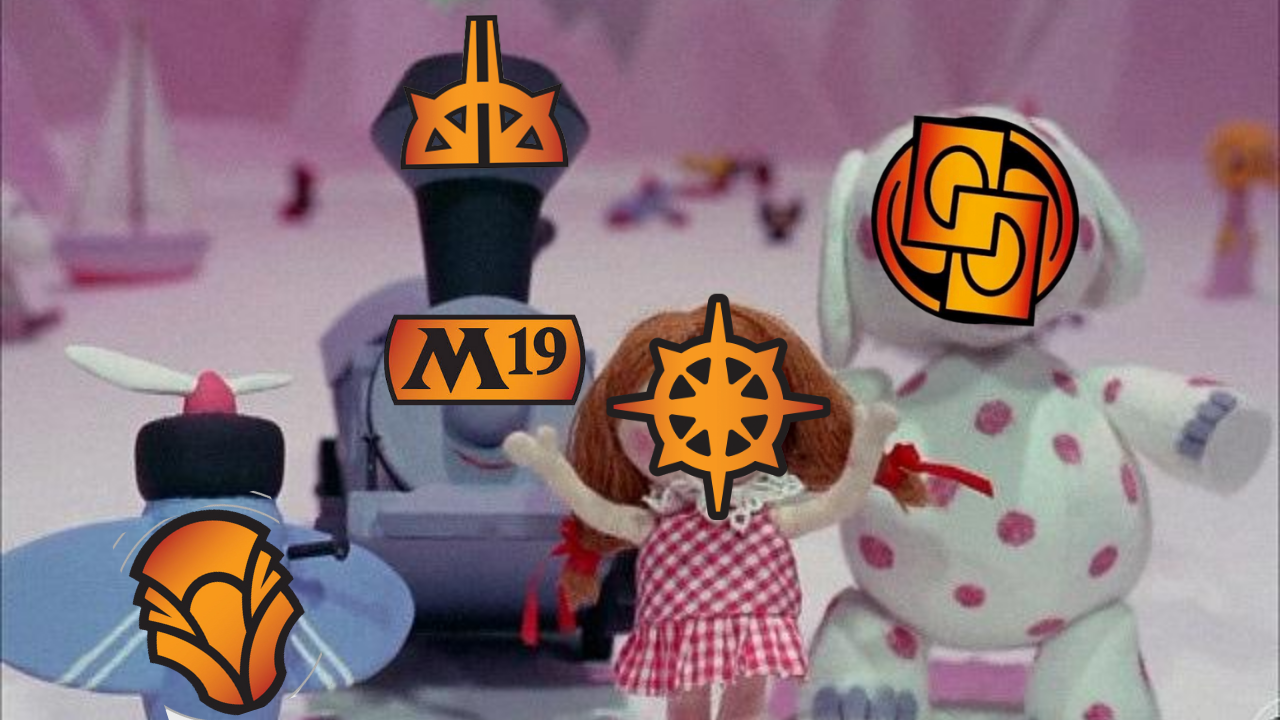
Historically Speaking...
A New Hope (Historic)
12 Aug 2020 - 10 min read
What’s good y’all?! Today, Hexdrinkers treads into new territory… Historic! I’ve been hearing increasing murmurs of the format and its potential greatness. With my interest in Standard waning for the time being, and the recent shakeups across many formats, I figured this was a perfect time for me to fully delve into the format in a new series: Historically Speaking…!

But as I was booting MTGA up, I realized, I have no clue what I’m doing.
So, for my benefit and your entertainment, this article will detail the beginning of my foray into Historic; how it works, the card pool, the in and outs, I’ll present my full research on all of this as a baseline for moving forward. I’ll also discuss the meta a bit, though that is in flux at the moment. This article will mostly act as a sort of primer and then I hope to get into gameplay and deck techs later on.
The Island of Misfit Toys

Historic is a non-rotating format exclusive to MTG Arena. This means that unlike Standard cards will stay in the format forever unless they’re banned. The Historic pool includes any cards that have ever made their way to Arena. Dominaria, Ixalan as well as the more recent pick-and-choose remasters but we’ll get to those in a minute.
Since Historic was designed as a digital format, it also allows Wizards to tweak it and try new things on a much larger scale and more consistently. This is a uniqueness that you can’t get in paper formats or ones that have long standing histories. Now you may be thinking that just means bannings and unbannings will be much more frequent, but there are other ways to shake up the format that are more interesting and arguably healthier than constant banlist adjustment.
Old Toys = New Toys
Historic, similar to the precedent set by Modern Masters last year, has its own unique sets that inject cards directly into the format bypassing Standard completely. These Historic Anthologies are small, curated batches of cards from across Magic’s vast history designed to fill gaps in the format. Adding answers to unchecked strategies, fan favorites from history, or support for new archetypes that need a boost, that’s what these products do for the format.. Powerhouses from days gone by like Mirari’s Wake , Modern staples like Thalia, Guardian of Thraben , and even kitchen table favorites like Serra Ascendant . These anthologies cover a broad spectrum of interesting play styles and eras to make Historic truly unique.
So far, three of these anthologies have been released. Historic Anthology I in November of 2019 brought 20 new cards, Historic Anthology II in March of 2020 had an increased 25 cards, and in May of 2020, Historic Anthology 3 upped the package again to 27 new cards to play with. Each one (which granted a playset of each card included) was available for 3400 gems on Arena, or individual cards could be crafted using the wildcard system. Though these are no longer available as bundles like before, Wizards has said they hope to drop new cards into Historic every quarter, so we can almost certainly expect anthologies 4, 5, etc. to drop moving into next year with a similar amount of cards (or slightly increased) and with a similar “price point”.

Though that isn’t the only way new cards get added into Historic. In December of 2019,
Rhys, the Redeemed
was added into both Brawl and Historic as part of the Brawlidays special event. Though nothing like this has happened since, it’s safe to say that we could receive singular (or much smaller than an anthology) drops as part of special events at really any time.
The most recent and largest addition to the format comes in the form of Jumpstart, the supplemental summer set released a few weeks back. Jumpstart included a host of tasty reprints as well as a slew of new cards to assist each theme (and cater to eternal formats). Because of this and with its release on Arena, Jumpstart cards also were added into Historic (with a caveat). Exciting!
Time-Out
So we have dedicated, curated drops, special event inclusions, as well as supplemental sets that can get added. All of these avenues mean the Historic card pool is continually growing and cards that are new and exciting as well as helpful to the meta are constantly being shuffled in. But sometimes action needs to be taken to help balance the format.

I’m of course talking about the traditional way of “fixing” formats… Bannings. Something that we’ve been all too familiar with over the past year. Historic has a banned list just like other formats (in fact, it looks quite similar to Standard’s, more on that later), but it also has a second form of disciplinary action: the Suspension.
Another benefit of an all digital format is that instead of having to go through the ordeal of outright banning something, Wizards can suspend cards, essentially putting them in “time-out”. A suspended card is not legal in the format, but it only remains in that status for a short time (usually one to two months). During this time, the meta can readjust and Wizards can watch to see if the format becomes healthier or if other problems arise. After the allotted time, the card either moves from suspension to banning, or can be reintroduced into the card pool. Most cards so far have gotten banned after serving their time, but some cards have been returned to the format and it sets a nice precedent for the future.
Being able to more quickly take action, test the effects of certain changes, and also not having the feel-bads or negative PR of a true ban, the suspension system is interesting and probably good for Historic and one of the benefits of an all digital format.
As Above, So Below
Lastly, let’s discuss the Historic meta briefly, so we know what we’re getting ourselves into. Given the power of the last year and a half of printings and also the so far limited card pool of the format, a lot of it looks similar to recent Standard. Up until the suspensions, Temur Reclamation was the top deck with variation on Bant and Sultai Ramp also doing well and variations of Sacrifice and Mono-red jockeying for position. In previous iterations of the format,
Fires of Invention
or
Winota, Joiner of Forces
decks were dominant.
Field of the Dead
builds, usually with
Golos, Tireless Pilgrim
have wavered in and out of the top of the format, with Field being one of the cards that was initially suspended and then un-suspended.

After digesting several metagame breakdowns and deck techs, I feel I have a reasonable understanding of the Historic metagame. One of the characteristics setting it apart from Standard is the presence of several powerful aggressive decks (though the recent bannings have started to prompt a resurgence in Standard). Mono-red, similar to its Standard counterpart, is strong and recently a top-tier version of a Goblins deck has emerged thanks to the additions in Jumpstart and
Muxus, Goblin Grandee
. Mono-green and mono-black both can compete, and there’s even a mono-blue aggro/tempo deck with
Curiosity
similar to the Mythic Championship winning deck from last year. Gruul aggro with the powerhouses
Questing Beast
and
Embercleave
has been tier one for quite a while (though it just took a hit with the explosive
Burning-tree Emissary
getting suspended).
History is Written by the Victors

With the recent regicide of
Wilderness Reclamation
, I suspect that these tier two decks will quickly rise to fill the space. Also, Jumpstart cards are still fresh and haven’t been tested fully, so I hope they will start to make even more impacts and soon we’ll have a new set in Zendikar Rising to shake things up even more!
I’m excited to explore this fresh new format! Next week I’ll be doing a deeper dive into the current decks and testing some of them out. After that it’s off to the Hexdrinkers special laboratory to concoct up some lists of our own! Hit us up in the comments or on social media for anything you want to see me build around, and remember to stay brewin’ y’all!!
More Entries in Historically Speaking...:
- 16 Sep 2020: The Meta Strikes Back (Historic, pt 2)
- 09 Sep 2020: The Meta Strikes Back (Historic, pt 1)


